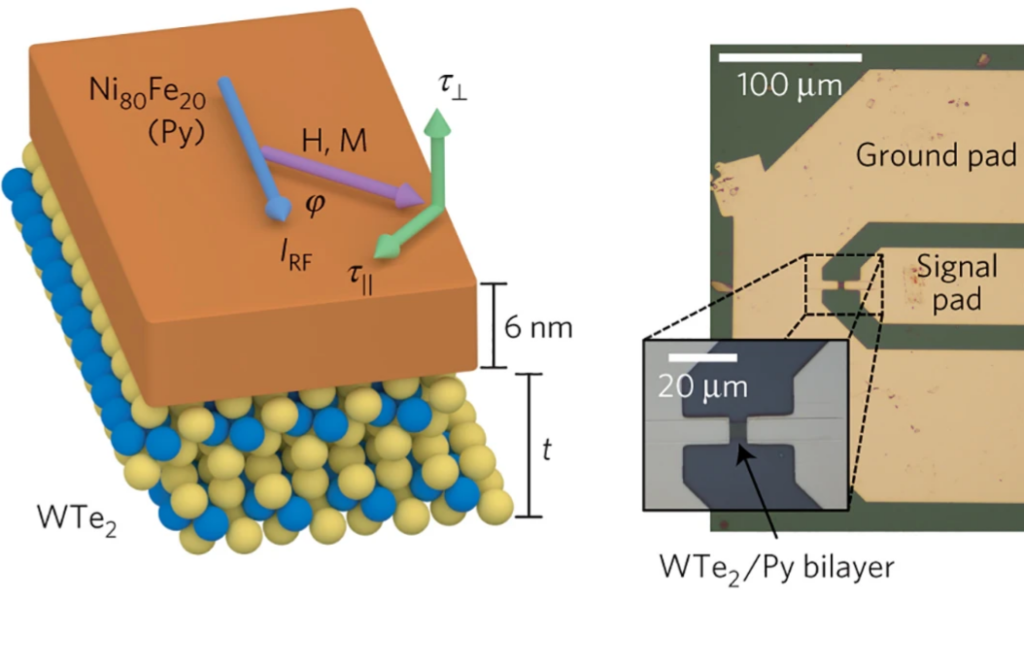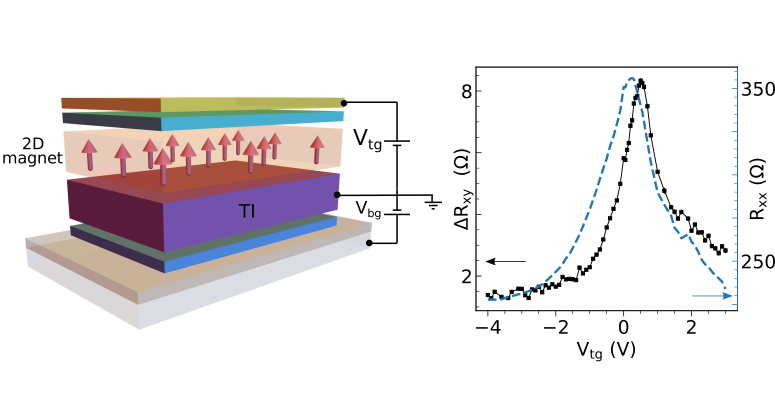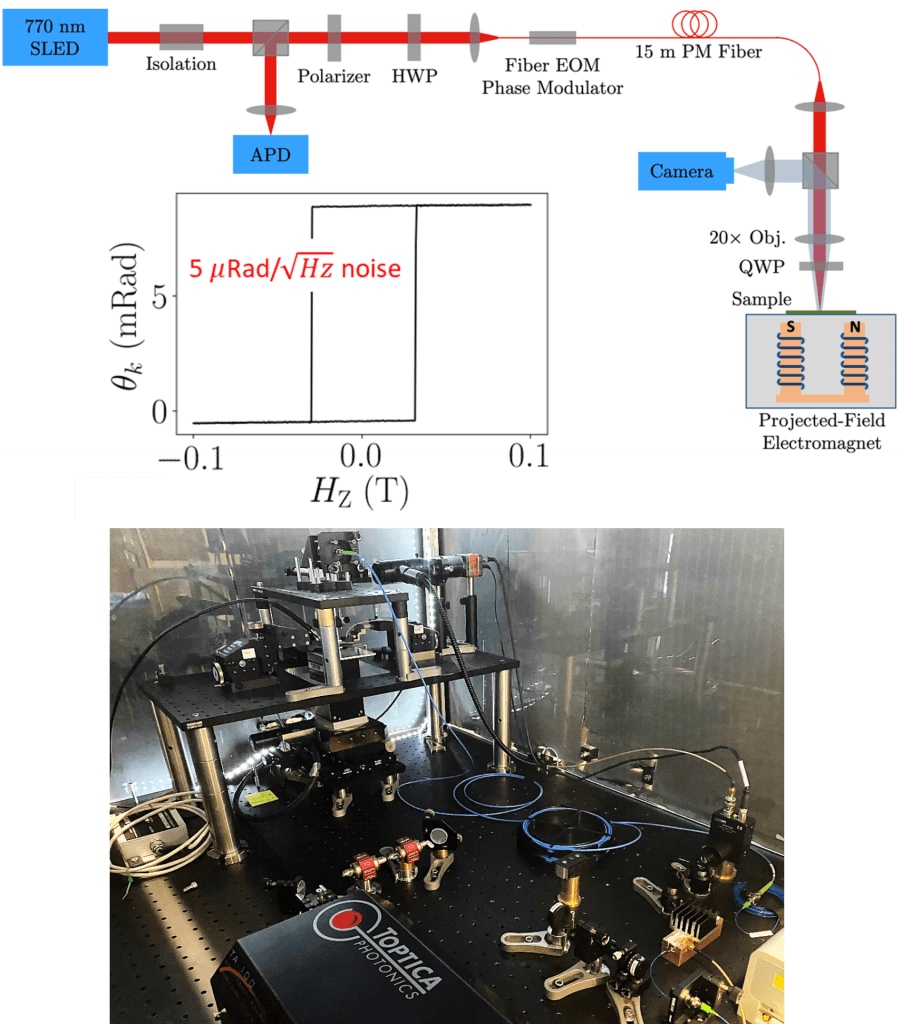Spin torques generated by low symmetry materials and antiferromagnets

an electric field generates an upward-
flowing spin current with a strong out-of-
plane component of spin polarization.
One of the primary focuses of the research group is to understand in what ways it is possible to control the direction of spin polarization within electrically- generated spin currents. Most previous studies of electrically-induced spin torques have focused on samples made from high-symmetry heavy metals or topological insulators, in which the direction of spin polarization is constrained by symmetry to lie strictly in-plane and perpendicular to the applied electric field. This “conventional” orientation can generate efficient magnetic switching for samples with in-plane magnetic anisotropy, but it is inefficient for switching nanoscale samples with perpendicular magnetic anisotropy (PMA) that are required for high-density magnetic memory applications. For switching nanoscale PMA samples, an important goal of the spintronics field is to generate unconventional spin currents that flow in the out-of-plane direction with a strong component of spin polarization perpendicular to the plane.
The generation of electrically- induced spin currents with this type of unconventional direction of spin polarization requires spin-source materials with reduced symmetry, which can be achieved, e.g., by using materials with low crystalline symmetry, ferromagnetic order, or antiferromagnetic order.
The recent findings from the group indicate that a new class of antiferromagnets dubbed “altermagnets” can generate strong unconventional spin currents. In these systems, the spin currents are generated by large spin splitting by exchange fields rather than spin-orbit interaction, which is significantly smaller in magnitude.


D. MacNeill, G. M. Stiehl, M. H. D. Guimaraes, R. A. Buhrman, J. Park & D. C. Ralph, Nature Physics 13, 300–305 (2017)
vdW spin sources and magnets

Measurements and metrology of spin-orbit torques
Sagnac interferometry for high-sensitivity optical measurements of spin-orbit torque

We have developed an ultrasensitive magneto-optic method to quantify spin-orbit torques (SOT) based on a modified Sagnac magneto-optic Kerr effect (MOKE) interferometry (5 μRad/√Hz). The high sensitivity of Sagnac interferometry permits for optical quantification of spin-orbit torque from small-angle magnetic tilting of samples with perpendicular magnetic anisotropy (PMA).